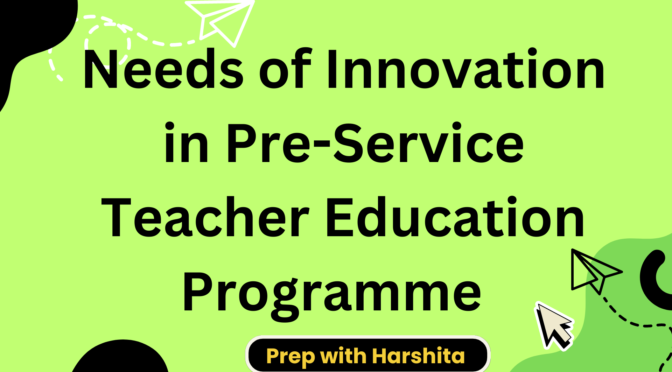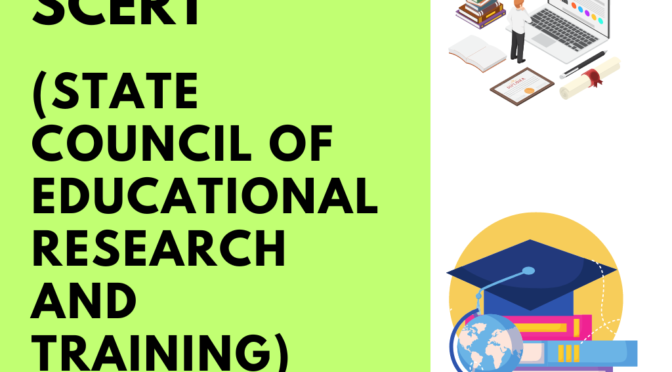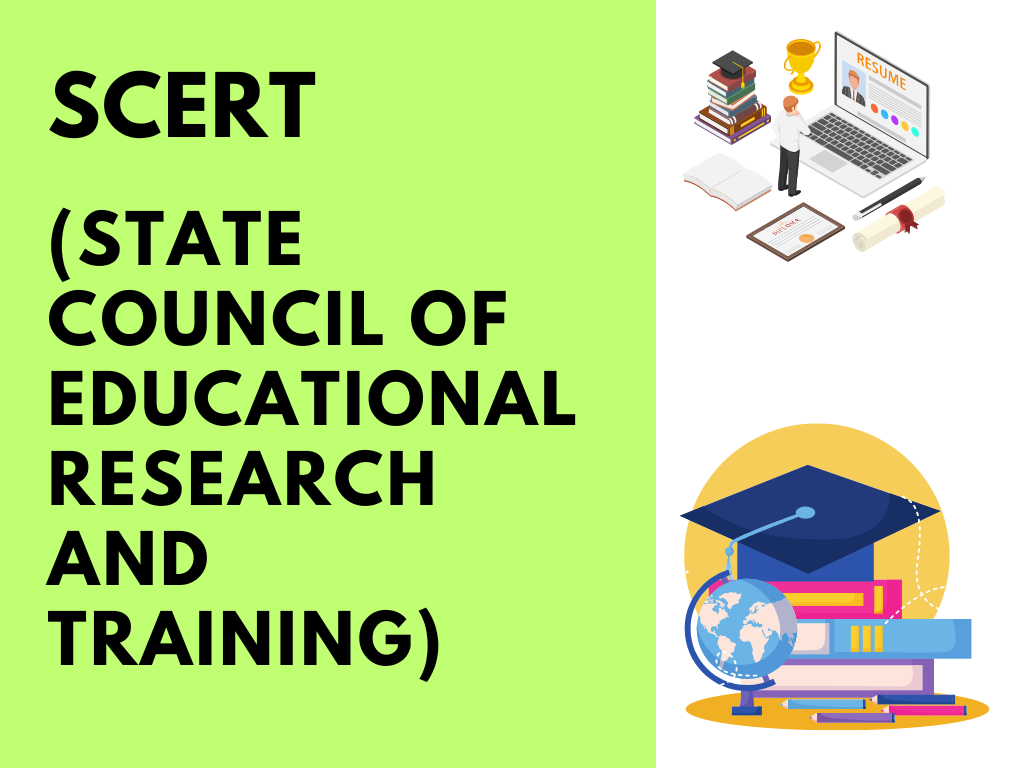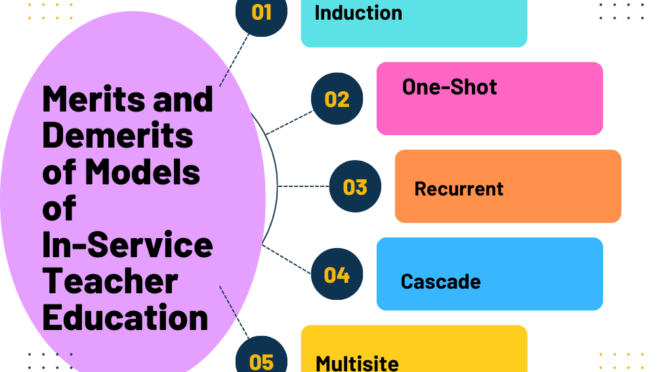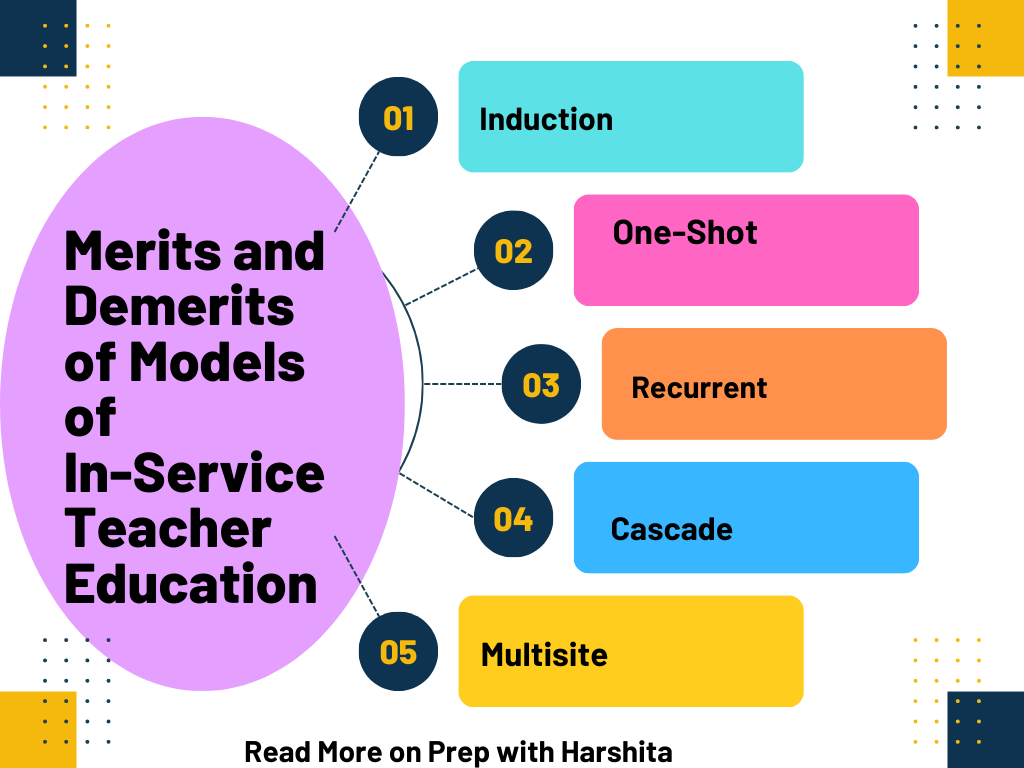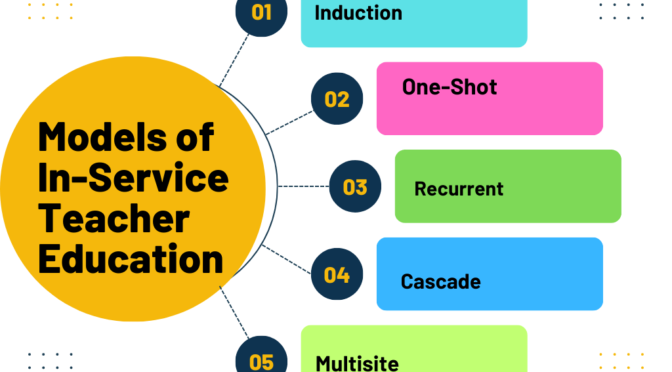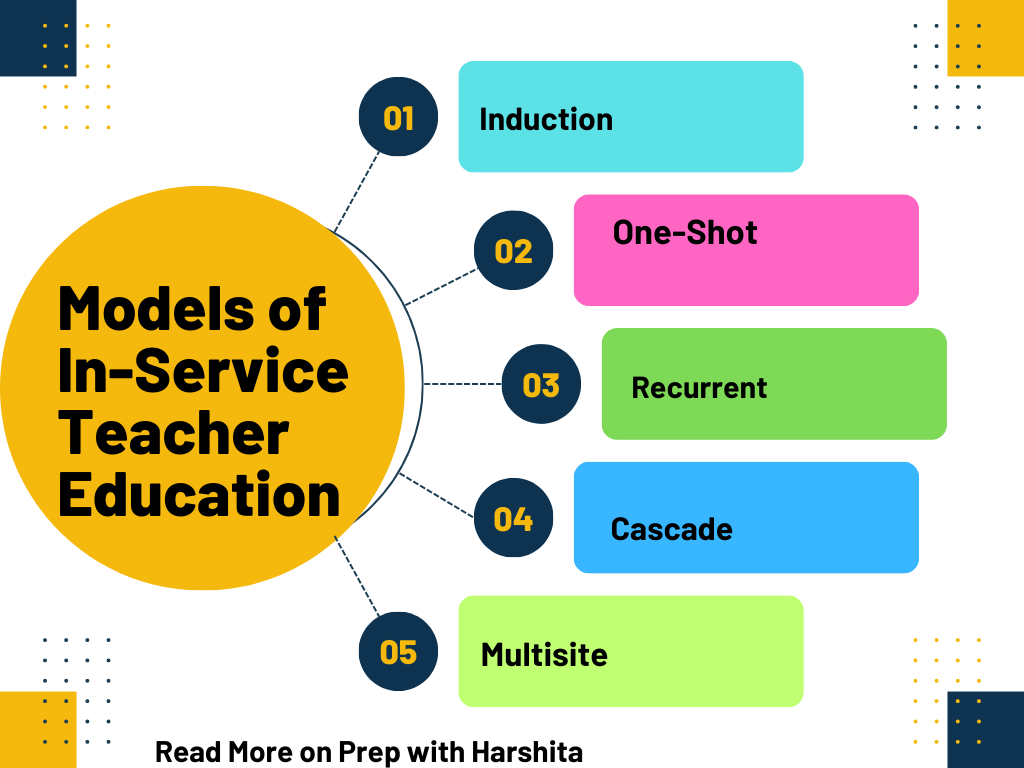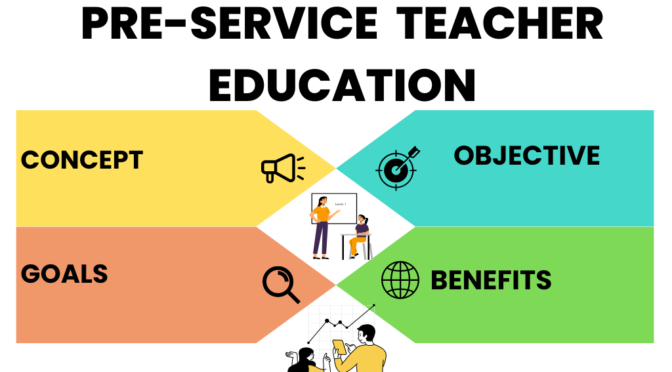Pre-service teacher education refers to the training and preparation programs that individuals undergo before they become certified or licensed teachers. It is the stage of education that occurs prior to a person entering the teaching profession and involves acquiring the necessary knowledge, skills, and competencies to be an effective educator. Pre-service teacher education programs are typically offered at colleges, universities, and teacher training institutions.There is a strong needs of Innovation in Pre-Service Teacher Education Programme.
Needs of Innovation in Pre-Service Teacher Education Programme
- Evolving Educational Landscape: The field of education is continuously evolving, with new research, technological advancements, and changing student needs. Pre-service teacher education programs need to keep pace with these developments and equip future teachers with the knowledge, skills, and strategies to meet the demands of modern classrooms. Innovation in teacher education ensures that graduates are prepared to navigate and adapt to the changing educational landscape effectively.
- Enhancing Teaching Effectiveness: Innovative pre-service teacher education programs can focus on developing effective teaching practices. By incorporating innovative pedagogies, instructional technologies, and research-based approaches, these programs can equip aspiring teachers with the tools and techniques to engage and motivate learners, facilitate critical thinking, and promote active and meaningful learning experiences. Such programs empower teachers to become more effective facilitators of knowledge and foster student success.
- Meeting Diverse Student Needs: Today’s classrooms are characterized by diverse student populations with varying abilities, cultural backgrounds, and learning styles. Innovative teacher education programs should address the importance of inclusive education and culturally responsive teaching. They should equip teachers with strategies to differentiate instruction, create inclusive classroom environments, and meet the unique needs of every learner. By embracing innovation, teacher education can better prepare teachers to support diverse students effectively.
- Integrating Technology: Technology plays a significant role in modern education, and teachers need to be proficient in leveraging technology for instruction and student engagement. Innovative pre-service teacher education programs should incorporate training on educational technologies, digital literacy, and the integration of technology in pedagogical practices. This empowers future teachers to use various digital tools and resources to enhance learning, facilitate collaboration, and differentiate instruction.
- Promoting Reflective and Inquiry-Based Practices: Innovative teacher education programs should emphasize the importance of reflective practice and inquiry-based teaching approaches. By fostering critical thinking, self-reflection, and ongoing professional development, these programs cultivate a culture of lifelong learning among pre-service teachers. They encourage teachers to continually reflect on their practice, seek innovative solutions to challenges, and engage in action research to improve their teaching effectiveness.
- Collaboration and Networking: Innovative teacher education programs can provide opportunities for collaboration and networking among pre-service teachers. By promoting collaborative learning, peer mentoring, and sharing of best practices, these programs foster a community of teachers who can support and learn from each other. This collaborative approach enhances professional growth and encourages the development of a supportive network that extends beyond the pre-service education period.
- Promoting Leadership and Advocacy Skills: Innovative teacher education programs should not only focus on classroom instruction but also prepare teachers to be leaders and advocates in the education field. These programs can provide training in leadership skills, educational policy, and advocacy to empower teachers to contribute to the improvement of education at the system level. This broader perspective equips teachers to advocate for equitable education, educational reform, and the needs of their students.
In summary, the need for innovation in pre-service teacher education programs arises from the ever-changing educational landscape, the diverse needs of students, the integration of technology, and the desire to enhance teaching effectiveness. By incorporating innovative practices, these programs can equip future teachers with the necessary skills, knowledge, and mindset to navigate and thrive in today’s dynamic classrooms and contribute positively to the field of education.
Also Read: Concept of Pre-Service Teacher Education
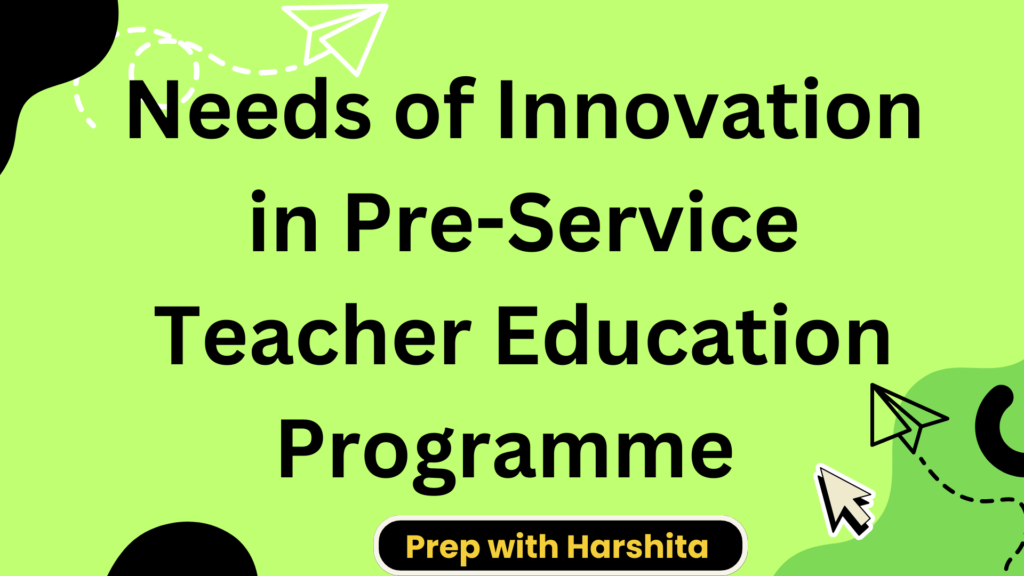
Also Visit: Prep with Harshita

